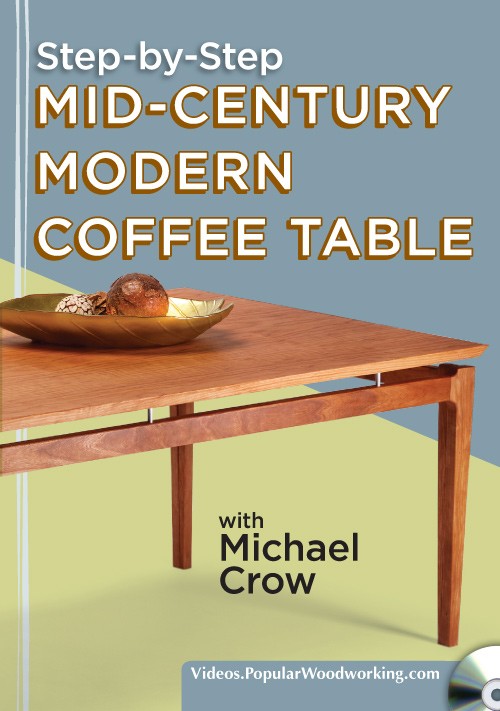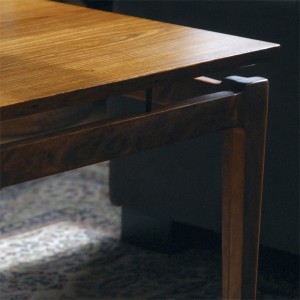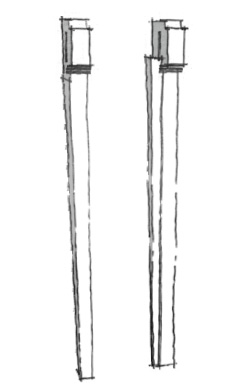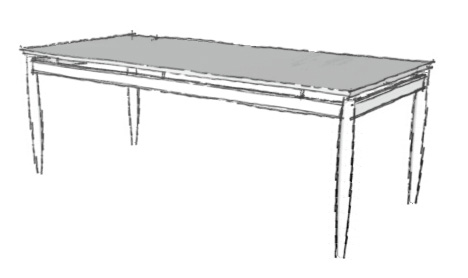
My step-by-step video on building a coffee table in the style of Finn Juhl is now available on shopwoodwhorking.com.
The second video I shot at the Popular Woodworking shop in January is now available on DVD and download. Include with the step-by-step video is a cut list and pattern for the tapered leg.
I find the minimalist design quite appealing–I especially like the effect of the floating top and the juxtaposition of sharp angles and smooth curves. I’ve built it with a plywood top to be historically accurate, (that’s the approach documented on video, too), but I think there’s enough play in the metal pegs joining base and top that movement of a solid top wouldn’t be too much of a problem. I think a solid, vertical grain fur top over a cherry base could look good.
More Information
If you prefer your woodworking instruction via the printed word, this Juhl-inspired coffee table is also one of the step-by-step projects featured in Mid-Century Modern Furniture.



